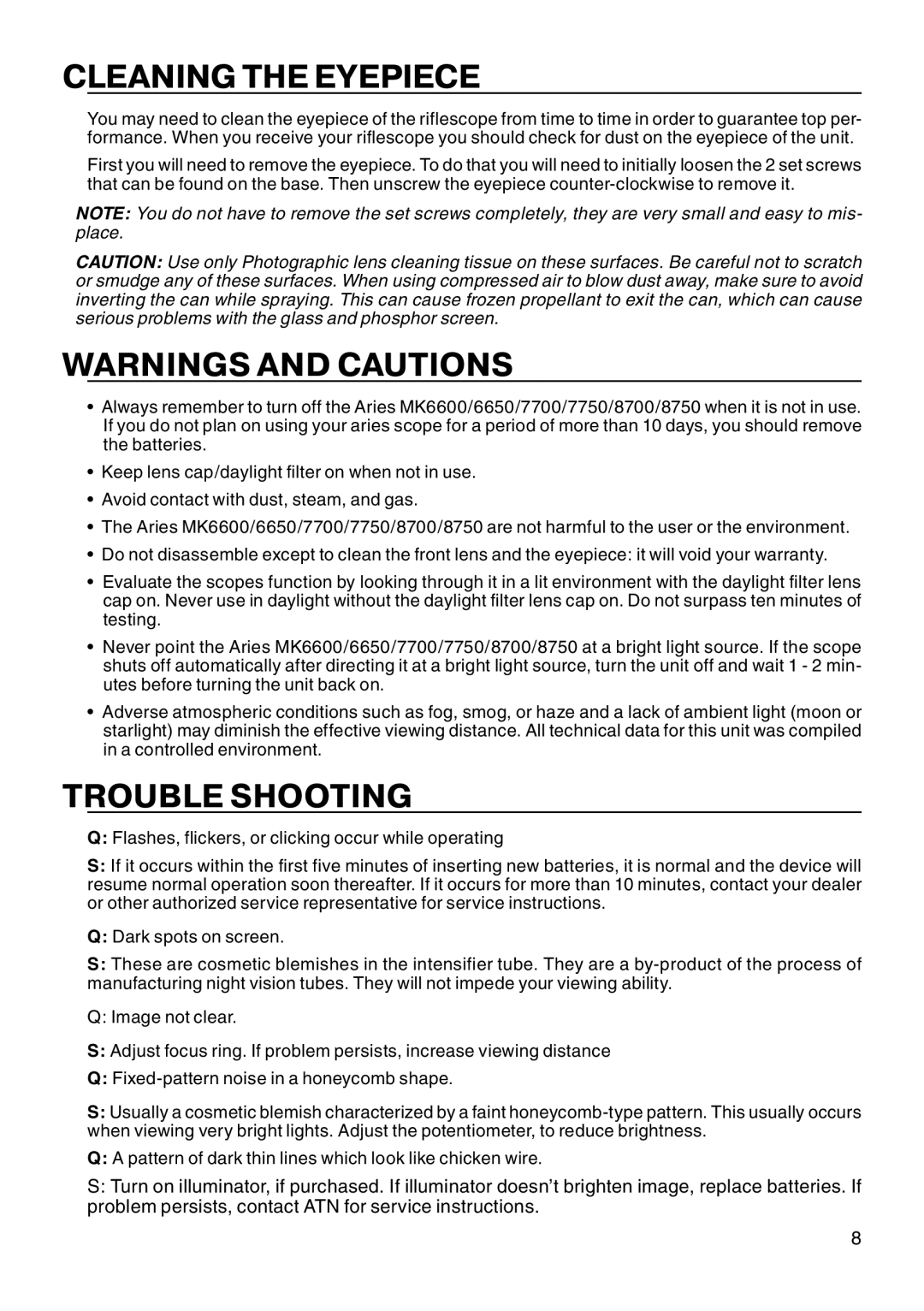
CLEANING THE EYEPIECE
You may need to clean the eyepiece of the riflescope from time to time in order to guarantee top per- formance. When you receive your riflescope you should check for dust on the eyepiece of the unit.
First you will need to remove the eyepiece. To do that you will need to initially loosen the 2 set screws that can be found on the base. Then unscrew the eyepiece
NOTE: You do not have to remove the set screws completely, they are very small and easy to mis- place.
CAUTION: Use only Photographic lens cleaning tissue on these surfaces. Be careful not to scratch or smudge any of these surfaces. When using compressed air to blow dust away, make sure to avoid inverting the can while spraying. This can cause frozen propellant to exit the can, which can cause serious problems with the glass and phosphor screen.
WARNINGS AND CAUTIONS
•Always remember to turn off the Aries MK6600/6650/7700/7750/8700/8750 when it is not in use. If you do not plan on using your aries scope for a period of more than 10 days, you should remove the batteries.
•Keep lens cap/daylight filter on when not in use.
•Avoid contact with dust, steam, and gas.
•The Aries MK6600/6650/7700/7750/8700/8750 are not harmful to the user or the environment.
•Do not disassemble except to clean the front lens and the eyepiece: it will void your warranty.
•Evaluate the scopes function by looking through it in a lit environment with the daylight filter lens cap on. Never use in daylight without the daylight filter lens cap on. Do not surpass ten minutes of testing.
•Never point the Aries MK6600/6650/7700/7750/8700/8750 at a bright light source. If the scope shuts off automatically after directing it at a bright light source, turn the unit off and wait 1 - 2 min- utes before turning the unit back on.
•Adverse atmospheric conditions such as fog, smog, or haze and a lack of ambient light (moon or starlight) may diminish the effective viewing distance. All technical data for this unit was compiled in a controlled environment.
TROUBLE SHOOTING
Q:Flashes, flickers, or clicking occur while operating
S:If it occurs within the first five minutes of inserting new batteries, it is normal and the device will resume normal operation soon thereafter. If it occurs for more than 10 minutes, contact your dealer or other authorized service representative for service instructions.
Q:Dark spots on screen.
S:These are cosmetic blemishes in the intensifier tube. They are a
Q: Image not clear.
S:Adjust focus ring. If problem persists, increase viewing distance
Q:
S:Usually a cosmetic blemish characterized by a faint
Q:A pattern of dark thin lines which look like chicken wire.
S:Turn on illuminator, if purchased. If illuminator doesn’t brighten image, replace batteries. If problem persists, contact ATN for service instructions.
8
